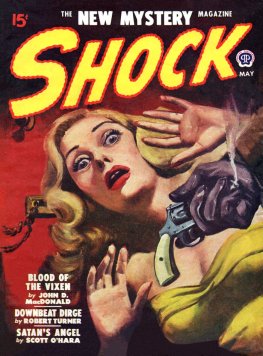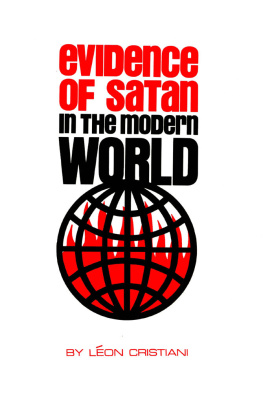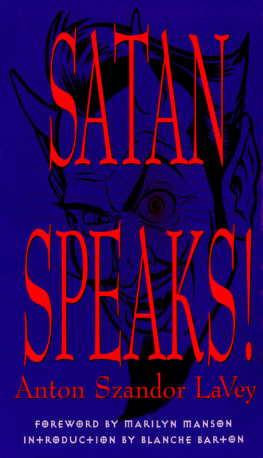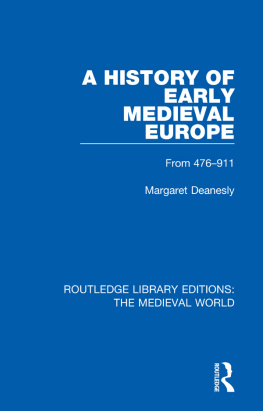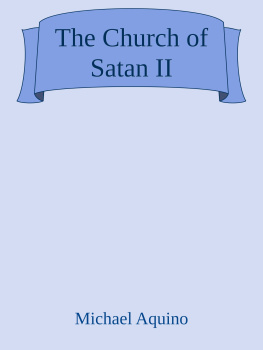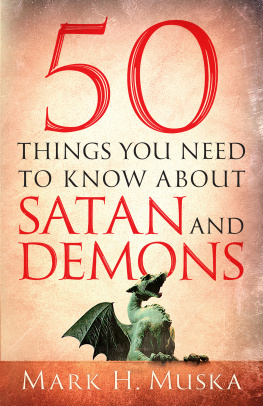This digital edition of And Satan Came Also is presented by the Metropolitan Library System in an effort to share the history and culture of Oklahoma County. While as true as possible to the original content, the original text may have been edited for content and format. The ideas and viewpoints expressed in the text are those of the author and not necessarily those of the Metropolitan Library System. Some material represents viewpoints of an earlier time that are not appropriate today.
Preface
This book is not a Chamber of Commerce brochure, but rather a story of that side of a citys life civic ballyhooers never advertise. Yet, it is a faithful reproduction of episodes in which red-blooded, intensely-human Americans, from every strata of society, played a part in building, within the space of a lifetime, a magic city in the Great Southwest.
Briefly, the story is an unexpurgated chronicle of a dramatic struggle with those social and political forces that are ever challenging good citizens to enlist in the age-old conflict between Catastrophe and Civilization.
Clowning politicians play the leading role, as they fill an exciting drama of typically Western life with plenty of comedy and not a little tragedy. Their behavior should be good for a barrel of laughs.
The author had a three-fold purpose in writing the book. First, he wished to record in a chronological sequence the story of a citys politics, much of which had never been published; second, he wanted to develop the thesis that the pattern in politics does not change, no matter how progressive a community becomes in other fields of endeavor; and third, he hoped to arouse good people from an unpardonable lethargy in time to save a beautiful, wide-awake city approaching the half-million mark from falling captive to vice, crime, and crooked politics.
The story could easily be the story of any other community. A reader who does not live in Oklahoma City may change dates, names and places, and feel perfectly at home as he reads. Nothing else is so well standardized as human behavior.
Albert McRill
1220 Sherwood Lane
Oklahoma City, Oklahoma
November 15, 1955
To The Reader
If I had not nagged Albert McRill for five years, And Satan Came Also never would have been produced.
My first acquaintance with the author was when he served as city manager for Oklahoma City in 1931. My affection for him dates from the hour when he walked the plank for refusing to do what the majority insisted that he should do.
Since statehood McRill has been interested in local politics. His education and experience as a practicing attorney provided him with a zest for detail and documentation which delayed the publication of this tome in an exasperating manner, but which has added greatly to its authenticity.
The sons of the pioneers are too near the gusty beginnings of the capital city to relish the truth, but it is ridiculous to listen to their suggestions that the facts be swept under the rug and forgotten. A citys past forecasts its present and fixes a pattern which can be broken as people acquire sufficient interest to participate in government.
In my judgement And Satan Came Also is the best book that has been written by an Oklahoman about Oklahoma City. I predict it will become a must item for anyone who wishes to know what makes Oklahoma City tick.
Walter M. Harrison
Oklahoma City
November 15, 1955
The Author

Albert L. McRill was born and reared in Franklin County, Kansas. Upon graduation from the Williamsburg highschool, he became the publisher of his local newspaper, as the youngest editor in the State of Kansas. He also published newspapers at Quenemo and Ottawa before coming to Oklahoma Territory in 1902. After establishing the Dispatch and Peoples Voice at Watonga, he edited the Day County Progress at Grand, the county-seat of Day (now Ellis) County. Later he entered Epworth University (now Oklahoma City University), graduating in 1910 with the degrees of A. B., A.M., and L.L.B. He helped compile the Oklahoma Statutes of 1910, and began the general practice of law at Oklahoma City in 1911 and has remained in the active practice. From the time he came to Oklahoma he was active in politics. In the campaign for constitutional prohibition of the liquor traffic in 1907 and 1910, he spoke throughout the State for the Anti-Saloon League. He was active in the crusade of the Central Hundred in Oklahoma City, and in the campaign of the Committee of 100 to establish the City Manager System of city government. For several years he wrote a daily column, In My Library, for the Oklahoma News, published in Oklahoma City.
He is a member of the Methodist Church. For five years he conducted a mens Bible class of 1,000 in the downtown Empress Theater, and for thirty years taught a Sunday-school class in the First Methodist Church of Oklahoma City. He was a member of the General Conference of the Methodist Episcopal Church of 1916. He served on the Board of Trustees of Oklahoma City University and its predecessors for twenty years and was acting president of the University in 1924. For fifteen years he was associated with the Oklahoma City College of Law as professor, and is currently law professor at Oklahoma City University College of Law. As research editor of the Card Digest System, he compiled digests of Oklahoma, Texas and California law. He is author of Oklahoma Fire Insurance Law, My Silver Jubilee, Summary of Oklahoma Law and Procedure, and several treatises on different branches of the law. During 1936 he was a special justice of the Supreme Court of Oklahoma.
In 1931 he served as Municipal Counselor, and was City Manager of Oklahoma City in 1931-1933. He is the author of the Ordinance under which the Oklahoma City Board of Education has operated since 1939.
The author is married and lives at 1220 Sherwood Lane in Oklahoma City.
To those pioneers who fought the good fight against vicious forces of their day, and the sons and daughters who follow in their train.
Chapter I
Too Late For Lunch
The wildest and wooliest day in history, was the way Dan W. Perry, Oklahoma legislator and historian, described the scene of April 22, 1889, at Oklahoma Station, a mere speck on the Atchison, Topeka & Santa Fe Railroad a hundred miles south of the Kansas border.
For a dozen years there had been aggressive action in and out of Congress to open for white settlement the Unassigned Lands of the Indian Territory, to be known later as the Oklahoma Country. Finally, on March 16, 1889, Congress opened these lands, and on March 23, 1889, President Harrison issued a proclamation formally declaring that at and after high noon, April 22, the two-and-a-half-million-acre tract of land would be subject to settlement.


